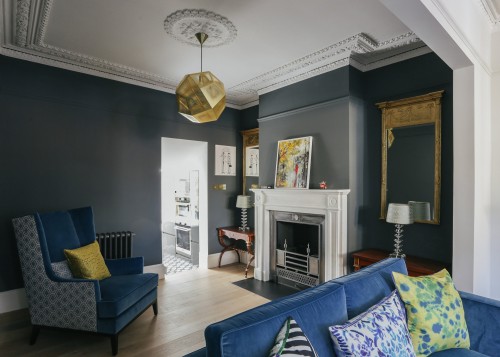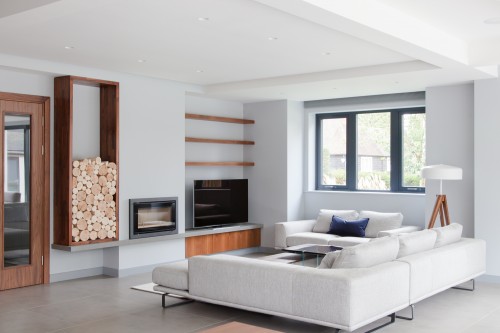The Hearth - Lounge interior design tips, from an architect's perspective
09 June 2021 by Simon Drayson
Old browser alert! We have detected you are using a pretty old browser. This website uses cool features that can't be supported by your browser.
If we let you see the website it would look all weird and broken, nobody wants that!
Update your browser!09 June 2021 by Simon Drayson
For many of us, this past year has been as much about looking backwards as it has about looking forward. During lockdown we both took the opportunity to revisit our decade-old academic work in order to help define our mission. For me this including rereading my thesis Sameness, which set out to identify a common architecture of essentiality, by exploring my former two-up-two-down Victorian terraced house (bread and butter for architects up and down the country).
It is often said that lounges need a focal point, typically a fireplace or a TV, both of which can actually have the opposite effect when switched off. We prefer to combine these with features than can be enjoyed all the time, such as joinery, artwork or plants.
Joinery is essentially fitted furniture designed and made to fit your space, to provide useful storage either in the form of ‘open’ shelves or ‘closed’ cupboards. Your choice of joinery finish, picture frame or plant pot can be a really effective way of pulling your interior scheme together, especially when thinking about how your old or new furniture will work in the room as a whole.
Modular storage such as Vitsoe’s 606 Universal Shelving System are a good alternative to bespoke joinery, with the added benefit of being able to take them with you when you move house. Of course, not forgetting soft furnishings – sofas, cushions, rugs and window dressings (either curtains or blinds) – which can be updated more regularly. When planning the layout of either fitted or loose furniture, remember to consider views to adjacent internal and external spaces, and the less desirable effects of the sun, such as: blinding you when you are trying to watch the TV or fading your prized possessions made from fabric or paper.

When the time comes to light your lounge, there are two main things to think about: you will need some kind of high-level lighting for times when you need to light the whole room (we think that pendants tend to work better than spotlights), and some kind of low-level lighting for those when creating atmosphere is more important (we prefer floor and table lamps on 5-amp circuits – meaning that they can be switched on and off by the door – to wall lights). Some suppliers – including ‘go to’ of ours Astro – have created comprehensive ranges of products to meet both requirements, which can help unify the design come day or night.
Power sockets should be placed so that they meet your energy needs, either hidden from view by furniture for bulky electronic devices, or easily accessible in the case of more portable ones. If you find yourself placing sofas in the middle of the room, floor sockets avoid the need for unsightly cables, which can also pose an unwelcome trip hazard. Log burners are becoming increasingly popular heating options, combined with central heating provided by radiators or underfloor heating, although energy efficiency should be factored in alongside human comfort. If you are lucky enough to be working with original features such as cornices or fireplaces, you will need to think carefully about how your choices will impact on these.

With lounges, we suggest using light or dark colours on the walls; anything in between risks looking a bit ‘wishy-washy’, especially when forming a backdrop for your artwork. Wallpaper can be a bit distracting, so it is probably best to restrict to one or two walls, preferably out of sight when seated. Recently there has been a resurgence of timber wall panelling, which is an easy technique to add colour and pattern, and is more durable than wallpaper in high traffic areas.
Whist carpets have gone out of fashion in recent years, there is something undeniably feel-good about the combination of soft wool and bare feet, so do bear in mind a rug if using a hard floor. Tiles can make a lounge feel somewhat Mediterranean, which might sound great at first but perhaps not so in a British winter, even with underfloor heating to combat the chill. Timber flooring – be it solid (as the name suggests), engineered (solid timber on plywood) or laminate (plastic on manufactured boards) – combines the warmth of carpet with the practicality of tile, and are available in a range of colours and patterns.
If you are still struggling to come up with a convincing colour scheme for your lounge, Farrow & Ball helpfully share failsafe suggestions to complement each of their colours on their website.

Next time, we will be sharing our thoughts on kitchens.